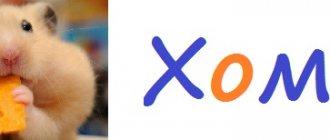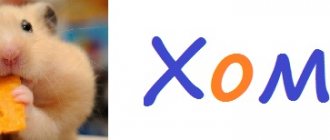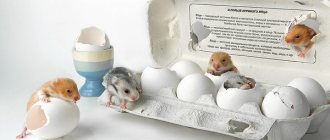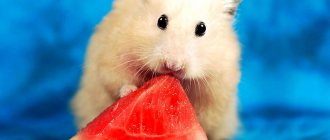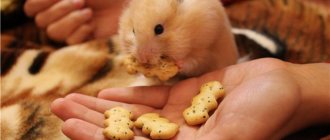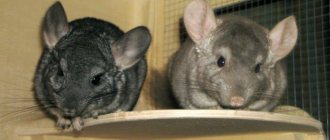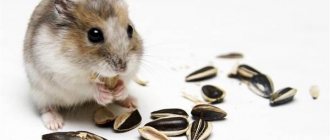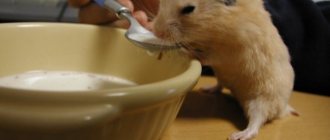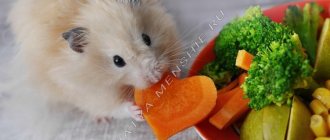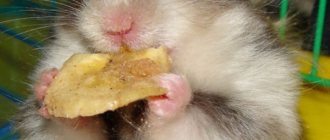This usually means various kinds of home-cooked dishes: pieces of cutlets, dumplings, sausage, and so on. Few people usually remember about cheese at this moment. On the contrary, the stereotype is firmly entrenched in our minds that this is the favorite delicacy of all rodents. Is it good for rodents?
I think you remember this character and what happened to him just from the smell of cheese.
What is useful?
For humans, this product undoubtedly has a number of useful properties and qualities. There is a high protein content, the possibility of long-term storage, essential vitamins, amino acids, and microelements, the listing of which would take quite a long time and would not provide any useful information to almost anyone. Just believe that there are plenty of useful substances in cheese.
Look at all this deliciousness and remember - this is not healthy for domestic rodents. Eat yourself!
For a hamster, on the contrary, some varieties of this product, wonderful in every sense, are not at all useful and even pose a danger, since they contain large doses of salt and fat. By giving his pet everything indiscriminately, the owner risks undermining his health.
Harmful and beneficial components
So what are the harmful and beneficial components of this dairy diet? Of course, hamsters are mammals, but this is not a reason to feed them cheese. First, you need to understand the cooking technology, and indeed whether hamsters can have cheese. For sourdough, as a rule, rennet elements are used; if all technologies are followed, a very fatty variety is obtained. Fat is harmful to a hamster. Still, his daily natural diet is cereals. And cheese is just an infrequent delicacy. After all, a hamster is a rodent, and it needs to chew cereals, fresh vegetables and fruits. Their stomach is not designed for daily digestion of cooked and dairy products, including cheeses.
How to choose the right one
First of all, pay attention to the presence of fat and salt. The fewer there are, the better for the pet.
We look at the composition and understand that there is quite a lot of salt here. It is in second place in the list of ingredients.
In addition, the composition should include only natural, high-quality ingredients. There should not be any palm oil in the composition. Also, the product should not be flavored with spices in any way. Flavorings are also prohibited. But with protein, the situation is exactly the opposite - the more, the better.
Content Features
Almost all people want to have a beloved pet at home, but in the modern rhythm of life it is difficult to find time to care for cats or dogs, so many people prefer to cage a small, unpretentious, fluffy hamster. Rodents really don’t need much human attention and care, which is why they have become so popular for keeping at home.
Many people believe that for good growth and good health you need to drink a lot of milk and eat dairy products. This is true, but when the conversation turns to hamsters, you can argue. Is it possible to feed hamsters cheese and other dairy products? This question constantly worries rodent owners.
Hamsters are mammals, and this suggests that such products will not harm them. When answering the question whether it is possible to give a hamster cheese and milk, you need to understand the little things, and only then draw conclusions.
Preferred and undesirable varieties
If you don’t want to check each cheese for its composition and compare it with others, you can simply find out which varieties are immediately suitable for inclusion in a rodent’s diet. It’s also useful to know which varieties you shouldn’t even pay attention to. For example, the DORBLU variety (with mold) is contraindicated for a hamster. What can I say, even people should not lean on such cheese with particular zeal. Excessive consumption of mold cheese threatens to disrupt the gastrointestinal tract and intestinal microflora, as well as vitamin balance. For a hamster, all this will be even more serious, so let the owners eat this delicacy themselves.
Sweet and processed cheeses are also contraindicated. You should not treat your hamster to sausages either. The best choice would be a variety of low-fat durum varieties. Remember the rule - a hamster needs to chew food, that's why it is a rodent.
What kind of cheese should you not feed?
Cheese is allowed to be given to hamsters in small quantities. After all, it contains the protein necessary for the animal. To understand whether hamsters can eat cheese or not, it is important to understand the fat content of the product. If it has a high percentage of fat, then it is recommended to give the hamster a piece no larger than a pumpkin seed. You cannot feed cheese flavored with pepper, spices or any other seasonings. It is forbidden to give a product with a high salt content.
It is better to give low-fat cheese to your hamster for complementary feeding, a product without spicy additives. The following types are strictly contraindicated: sausage, pasty, processed, suluguni and feta cheese. Blue cheese can quickly destroy a small organism.
How often and in what portions to give
The optimal approach to consuming such products for rodents is a couple of times a week, no more. In their natural habitat, their diet does not rely on protein foods, so there is no need to overdo it. It is best to designate separate days on which the pet will be given cheese. This is very convenient for monitoring your hamster's diet. You need to start with tiny portions and gradually increase them to a medium size. Usually this is a small cube 2x2 or 3x3 centimeters, or a couple of thin slices.
Why do we think about feeding hamsters cheese?
A hamster is a finicky, delicate animal with poor health, which can get sick for various reasons, so the issue of its nutrition must be approached responsibly. First of all, he is given cereals, vegetables and fruits ─ this is a safe and familiar food.
But hamsters also need protein. While in nature, they replenish their protein reserves with grasshoppers, butterflies and larvae. Living at home, hamsters receive protein in the form of special complementary foods ─ bloodworms, gammarus, etc. But not everyone likes such food; many pets refuse such complementary foods.
In this case, many people have a natural question: should they give their beloved hamster cheese? It is rich in protein and could well be suitable as a replacement for traditional complementary foods. Many people do just that and feed their rodents this delicacy.
What does a rodent eat in nature?
Being an omnivore, the hamster eats almost everything that comes into contact with it. The exact diet is determined by the habitat. If a rodent lives in a steppe or semi-desert, it feeds on protein foods, including:
- Insects.
- Snails.
- Zhukov.
- Worms.
The importance of protein feed increases after hibernation or during gestation. Field and garden individuals eat greens, fruits, cereals and vegetables
Feeding pets should completely replicate the diet of their wild counterparts.
Field and garden individuals eat greens, fruits, cereals and vegetables. Feeding domestic pets should completely replicate the diet of their wild counterparts.
The natural instinct of hamsters is to be thrifty. Therefore, closer to the winter season, they fill up their storage. In this case, the pantry must be located in a hidden place and inaccessible to other animals. When keeping a rodent at home, you will need to periodically remove supplies, since food quickly spoils and emits an unpleasant odor.
Features of introduction into the diet
So, suppose you have found the ideal product for your pet, but now questions arise: how often to give cheese, in what quantities? Let's look at the answers below.
It is necessary to understand that protein food is not the basis of the diet of these rodents, so you should not add it to the food too often. A small piece just two or three times a week will be enough. You can determine the so-called “protein” days on which you will give your baby cheese. This could be Monday, Wednesday and Friday, so it will be easier not to get confused.
As for the portion, its size should be very small. One serving is cheese the size of a sunflower seed.
Introduce a new product into your diet little by little. First, give a very tiny piece, if the baby appreciates the treat, you can give more cheese next time.
Important. Cheese can be offered to pets who have reached the age of six months.
Source
Alternative treat options.
Can hamsters eat cheese? Each owner decides for himself. It's better to pamper your pet with something more suitable. You can use special additives for rodents, an abundance of which can be found in any pet store. Or give preference to products that the hamster will like and will not harm his health.
Natural treats for hamsters:
- raisin;
- dried apricots;
- corn;
- banana;
- strawberry;
- beet;
- dill;
- millet;
- peanut;
- oats;
- beans;
- carrot;
- zucchini;
- pumpkin;
- raspberries.
By maintaining a balanced diet for your hamster, you can count on your pet's good health.
What can you feed hamsters and what not?
What diet for a pet hamster is considered balanced and correct?
What should he be given daily, what is best to limit, and what should he not be fed? If you feed your hamster everything that you bought for him at the market or in the supermarket, you are definitely risking his health. After all, you don’t know where the saleswoman got the green salad or carrots on the counter, and you also don’t know how the vegetables were processed before they arrived at the store. And if vegetables and fruits were fertilized with substances that are very harmful in their chemical composition, or they were grown next to a dusty, dirty road.
That is why the safest food for your pet is only that which you or someone you know has grown in your own garden.
The most vital food for small domestic rodents is, of course, any grains, dry food and cereals. It is better to buy boxes of dry food with additives in stores that specifically sell dry food and food for animals.
Be sure to include in your hamster's daily diet:
Peas, barley, rolled oats, wheat, millet, oatmeal, corn and lentils Protein food consisting of: low-fat dairy products (one percent fat content is allowed in regular yogurt, without additives, kefir and cottage cheese); chicken meat; river fish and shrimp; quail or fresh chicken eggs; insects, gammarus, grasshoppers and dried worms from a zoological store. Additional food - wheat and oat ears, dried hay. In order for the hamster to have the opportunity to grind down his teeth in the cage, you should place a twig of any fruit tree or a birch twig. Fresh dill, lettuce leaves, parsley or clover. Minerals along with vitamins. We advise you not to buy vitamins individually in specialized stores, but rather take a package with mineral supplements. However, before you give your pet vitamins, monitor the animal’s reaction: will he like them? There are hamsters that cannot stand this or that vitamin. If there is an urgent need to support the health of a small pet, it is better to grind the vitamins into powder and add them to the main liquid food, or mix them with fruits and vegetables. Be careful not to overfeed your hamster with vitamins, otherwise he may develop various diseases due to side effects. Please note that recently, each pet store has been selling special wheels for rodents to help the animal grind its teeth. Fresh water
Drinking is vital for any animal, just as it is for humans. There is no water in cereals and grains, so a domestic hamster, which spends most of its life in a cage, definitely needs water.
To feed your hamster if diarrhea or constipation occurs, you can give:
- Cereals boiled in water. Before cooking the cereal, it should be soaked in water in advance.
- Rice boiled in plain water. It helps the hamster with diarrhea and intestinal disorders.
- A drop of sunflower oil is added to the basic diet for constipation.
What can you give your pet hamster in small doses:
- Several vegetables and fruits, except cabbage of any kind, exotic fruits, beets.
- Sweet dry, unsalted popcorn.
- Any nuts - walnuts, hazelnuts or sesame.
Useful properties of the product
When a hamster eats cheese, its body receives many beneficial substances:
- Protein is a vital component. It is a building material for cells and helps build muscle mass.
- Amino acids, which are contained in high-quality cheeses, increase the tiny body’s resistance to various infections (viral, bacterial and fungal). In addition, organic compounds are involved in metabolic processes and fermentation processes.
- Cheeses are rich in vitamins B, A, D. These beneficial components help improve immunity, normalize the functioning of the cardiovascular system and have a beneficial effect on the visual organs.
- The dairy product contains vital microelements - phosphorus, magnesium, calcium and potassium. These substances prevent the development of tumors, tone the muscular system and normalize the functioning of the nervous system.
So, if your pet enjoys eating such a treat, you should choose the safest and healthiest variety for him.
Vitamins, mineral supplements and treats
For the proper development and full functioning of the body of Syrian hamsters, it is necessary not only to feed them in a balanced manner, but also to provide them with special fortified preparations. They are available in solid and liquid form and are mixed into the animal’s drink or food.
A mineral stone is also placed in the pet's cage. It will not only help sharpen the incisors, but also enrich the body with essential substances. Pregnant females are given a chalk stone, which can have a fruity or herbal flavor and will provide the expectant mother with calcium and other trace elements.
As treats for your Syrian hamster, you can eat rose petals, unbuttered and salt-free popcorn, dried fruits, cereal sticks and fruit chips.
Milk in small quantities
As they say, everything is possible in moderation. If you really want to treat your little friend with milk, then it’s better to moisten a piece of stale bread and feed it to him. The product should be low-fat, no more than one and a half percent. It should not be given daily, but it is better to pamper the hamster with milk on major holidays. However, its quantity should be minimal.
Many hamster owners say that before treating their rodent with this product, they should boil the milk to protect their pet from indigestion.
If you have a pregnant or lactating female hamster, you can give her small portions of milk every other day to support her body. You should stop feeding your hamster as soon as you remove the babies from her.
In what form to give
Rodent owners often ask whether hamsters can eat raw beets. Yes, you can, because it is advisable to feed these pets raw vegetables.
To prevent your pet from being harmed by treats, follow these recommendations.
- Before feeding, be sure to check the root vegetable - it must be fresh, without rot or mold.
- Wash the vegetable thoroughly and trim the peel.
- Feed vegetables grown in your own garden or purchased from trusted sellers who do not use chemicals.
- When offering beets for the first time, give a tiny piece and watch your pet.
- After you are sure that the animal does not have allergies and the stool is normal, you can offer another piece after a while.
- Throw any uneaten food out of the cage immediately.
Can hamsters have boiled beets? Sometimes you can offer your pet boiled beets, but they should be fed under certain conditions:
- Do not boil the vegetable for a long time so that it retains more nutritional value;
- Do not add salt or spices to the water when cooking;
- Do not feed boiled beets very often; several times a month will be enough;
- The piece of boiled vegetable should be small in size, as described above.
Beetroot is a delicacy for a hamster and therefore it is not necessary to feed it in any form often. Djungarian hamsters should be offered beets in even smaller portions.
How much do pet hamsters eat?
Your pet is a nocturnal animal, you need to remember this. During the day he sleeps, and at night he eats, plays, exercises on a “simulator,” stores supplies, and sharpens his teeth. Therefore, the best option is to feed the baby twice a day. In the evening - the main meal, a hearty breakfast. In the morning, before bed, have a light dinner.
The amount of food that should be given to an animal at one time depends on the type and size of the rodent. When feeding twice a day, the Syrian is given one tablespoon of the feed mixture, and the Djungarian is given one teaspoon. Campbell's hamsters and other dwarf species feed similarly.
He will hide all the food that the hamster does not eat at one time in the pantry “for a rainy day.” Periodically review these supplies and remove perishable foods so that the animal does not get poisoned. Be sure to put something fresh in place of the “seized valuables”. Otherwise, the baby may become seriously stressed because all his reserves have disappeared, and he will die of hunger in the long, cold winter.
Should I give it to dzhungarikas and Syrian hamsters?
Any hamsters eat food until it runs out in the feeder. The norm is unknown to the animals, so it is recommended to give small portions several times a day. This also applies to other varieties of hamsters: Djungarian or Syrian. They are popular species among these rodents. The Dzungarian species is quite voracious and eats up to crumbs everything that is in the feeder. It is up to the owner to decide whether to give Syrian or Djungarian hamsters cheese. But their usual food, grains and vegetables, is much healthier; the food should be spiced and unsalted. Strictly a small piece once a week.
Can hamsters eat grapes?
Hamsters can eat grapes, and they love this healthy fruit. Grapes are berries, but not citrus fruits, so they are completely safe for hamsters. However, if you are keeping diabetic dwarf hamsters, then this product is not suitable for regular feeding.
To make sure grapes are safe for hamsters, you can crush them and see if they have seeds, or, as a last resort, remove them yourself. Grape seeds can pose a choking hazard to hamsters and should always be removed first. And as previously mentioned, dwarf hamster species should not be fed large amounts of sugary foods, and grapes contain a lot of sugar.
What grapes do hamsters prefer? There is no evidence that hamsters prefer green or red grapes, so it comes down to personal preference. You can feed your hamster grapes every few days, and they certainly shouldn't be the main staple of his diet. Eating too many fruits and vegetables, which contain fiber, can cause stomach upset and diarrhea.
Also be careful - hamsters love to hoard and store food. So use fresh food sparingly and check every few days that your hamster has eaten all of his food.
